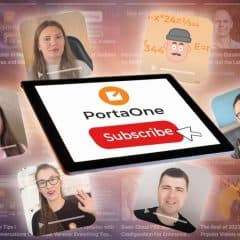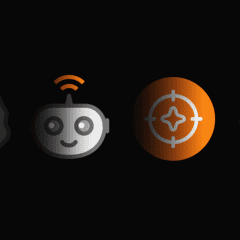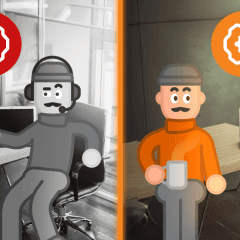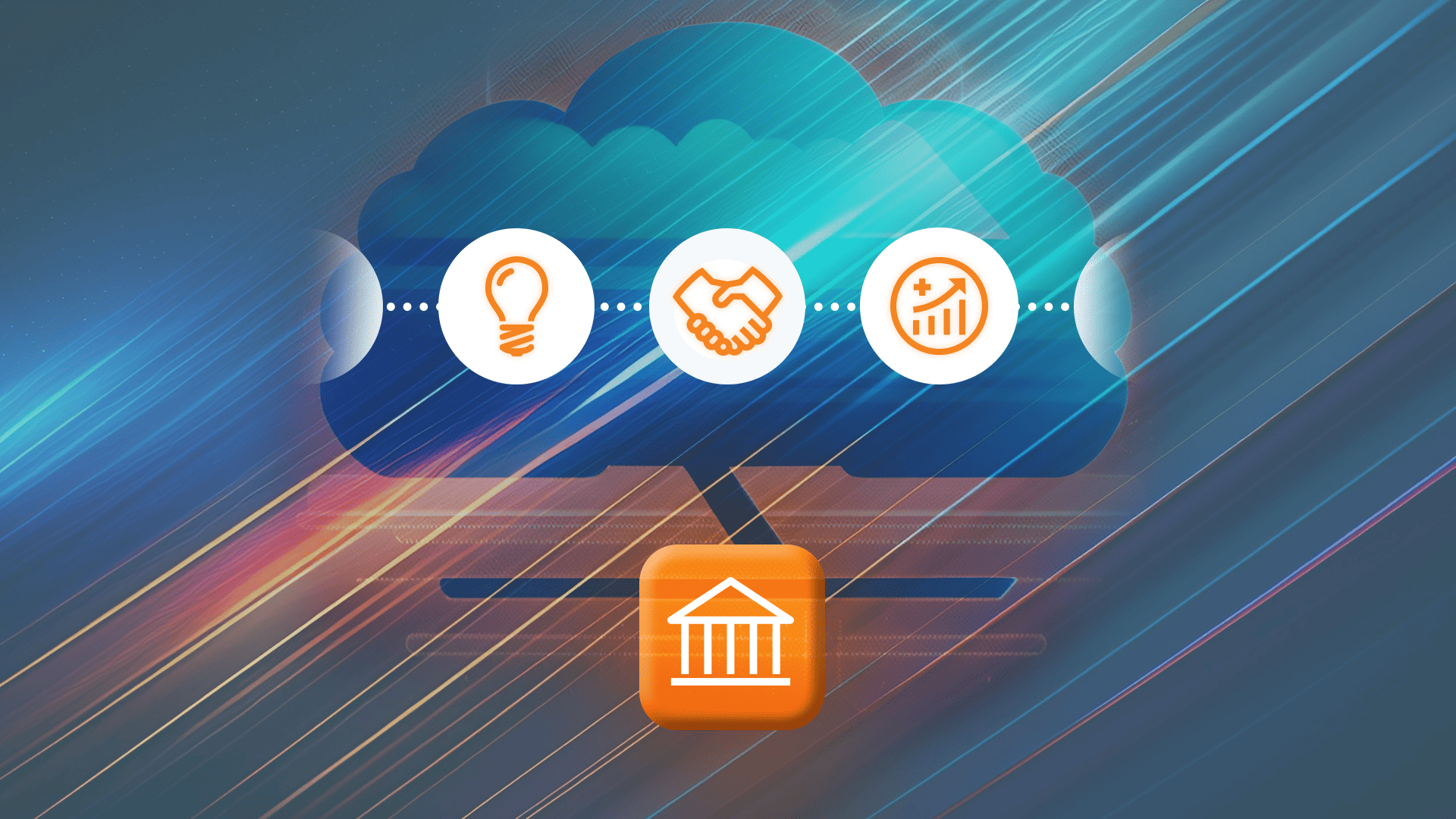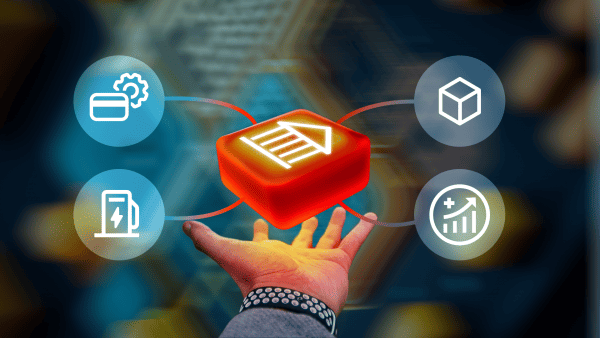In August, Scotland made global headlines again with local citizens and politicians seriously revisiting the idea of Indyref. This political return happened despite Alex Salmond, the leader of the Scottish National Party, calling the independence referendum a “once in a generation opportunity” back in 2014. Much like the leadership of Scotland fusses with independence, the leadership of PortaOne fussed with the idea of SaaS licensing for quite a time. The question was: how can you implement a SaaS business model while staying true to your vows of a perpetual, unlimited license? In this story, we’ll show you how we answered that question and lay out our path of migrating to SaaS in telecom.
What Are Our Clients Saying?
This story starts in the LinkedIn newsfeed. Our CEO Andriy Zhylenko noticed a post from Neil Darling – a long-time client and an influencer on the market for VoIP solutions. Here is that post:
“My first instinctive reaction was to type a long-read answer right from the smartphone,” Andriy recalls. Neil voiced a concern that so many clients have expressed in the middle of a lockdown and the Zoom boom. Nevertheless, the content strategist inside Andriy took over. He asked Neil’s permission to quote the LinkedIn post here and to offer his answer as part of this story.
Why Customers Still Can’t (in Most Circumstances) Own “A Piece of the Cloud”… and What It Has to Do with Scotland
Dear Neil, first of all: we beg your pardon. “The customer is always right,” and we know that quite well. And we hope you know that we know 😂 that we understand perfectly that COVID, the lockdown, and the resulting Zoom boom wasn’t necessarily “a boom” for the entire telecom industry. Especially for those in the office telephony business, tourism, and hospitality or HoReCa.
Still, it’s simply too costly for a customer to own “a piece of a cloud” in most cases. And here are a few reasons why that whole “economic” argument doesn’t really stand up.
Reason 1. A cloud (especially in telecom) requires software, infrastructure, and various platform components, not just “yet another computer”
The common misconception (and a popular meme) from the mid-2010s is that “the cloud is just someone else’s computer”. In an excellent piece for TechRepublic, Jack Wallen explains why this is not necessarily so. Wallen reasons that cloud providers are delivering something more than simply “glorified servers”. The cloud stack, according to Wallen, consists of (1) software, (2) infrastructure, and (3) platform. While each element requires “yet another computer” to exist, there are many more elements on each layer of the pie – and all are needed for the application to work correctly.
Let’s take PortaOne, for example. There is a software: old good monolith PortaSwitch, which is now undergoing a peasant fleet transformation into a microservices-based architecture. There is infrastructure: Oracle Cloud, which utilizes Kubernetes-based instances, or a combination of our own Configurator plus TerraForm, thus enabling our platform. That is running on various computers. Adding yet another one won’t make a difference (or help) unless we perform all the necessary changes to our software, infrastructure, and platform. Only then would the beauty and the elasticity of the cloud appear.
Reason 2. Running your “own cloud” requires a blank check for unexpected spikes in computational power
Distributed costs are the beauty of SaaS and cloud infrastructure. By migrating to SaaS in telecom you no longer need to pay for idle computing resources all the time just to make sure you can process traffic during a peak hour or on a busy day like the New Year. Cloud orchestration software monitors and oversees the running application and dynamically adds the resources your business needs to function properly. OCI, AWS, and Google Cloud are really big computational clusters. Their existence makes sense, provided the number of SaaS customers they serve. Spikes can (and do) occur in any business.
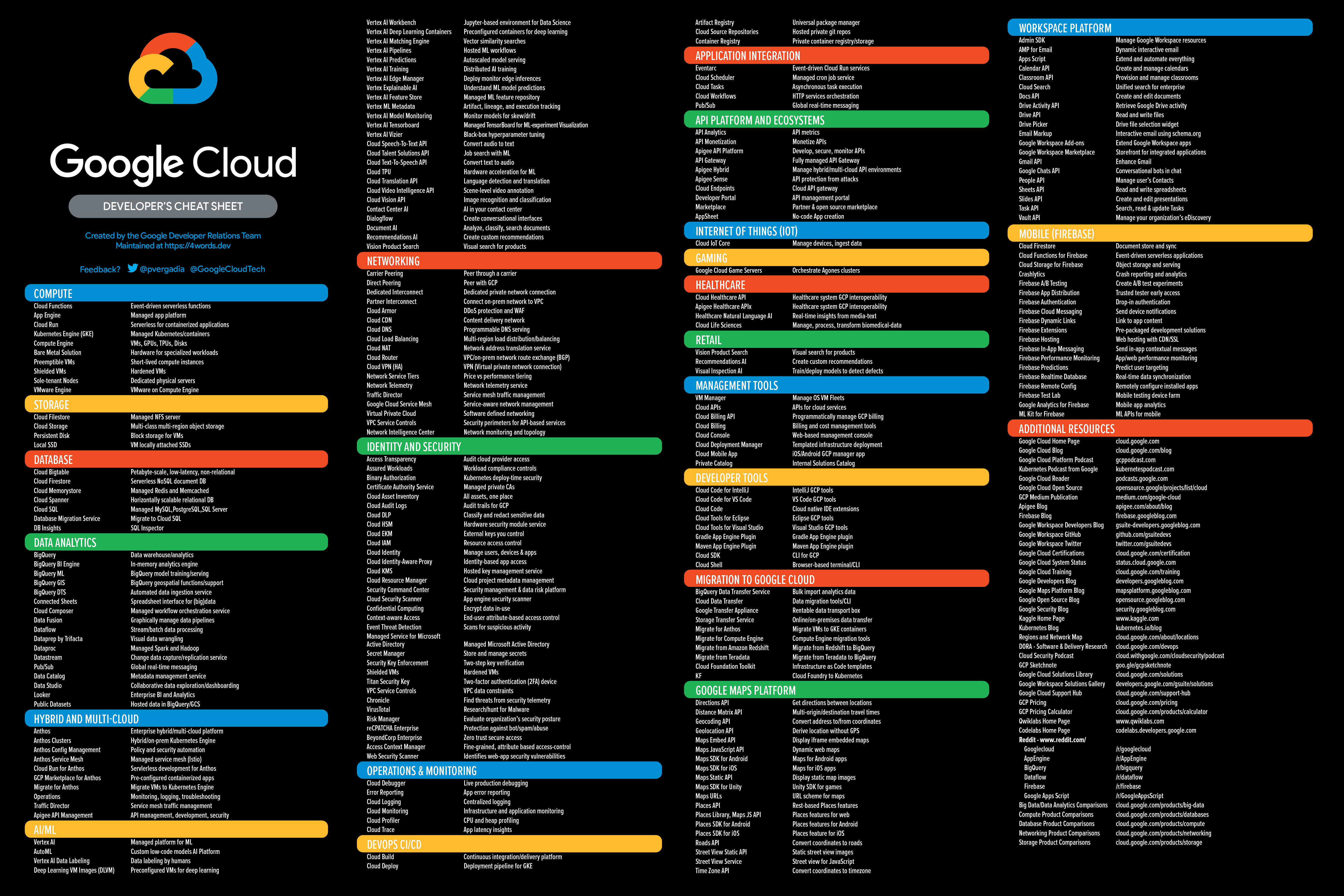
Another great thing about cloud in telecom is the variety of cloud components that a developer can use – for example, for converting a voice clip into text or preventing banking fraud. Each of these components is billed according to a different metric, e.g., duration of the voice clip, storage size, or the number of API calls. The ugly backside to this beauty (a backside that the gorgeous landing pages of cloud providers are reluctant to give you express notice of) is that it’s almost impossible to predict the actual running cost of the application. See, you don’t know in advance the exact patterns of user activity, including potential fraud attempts and denial-of-service attacks, or how many API calls or consumption of cloud components it will translate into.
The Private Cloud Dilemma: Kill Elasticity or Become a Control Freak
Do you still want to run our code all by yourself, while you are “paying the bill?” 😉 Alternative approach is running confirmations here and there for each computational spike or each API request. This would drive your operational costs of using our software to the ceiling. Therefore, it’s not the “greedy nasty PortaOne” that’s hiding the perks of the wonderful “private cloud” from you. It’s common sense and our natural desire to provide the optimal customer journey to our customers (and your end-users as well), which dictates the current cloud setup for PortaSwitch.
Reason 3. Do you want to run your own data center?
For PortaOne, the “moving to the cloud” meant we transformed our business from managing numerous “custom-built” and “custom-maintained” installations of PortaSwitch into building cloud-based applications via Kubernetes and other cloud-native solutions. We also learned to monitor and control the performance indicators of a pretty much standardized infrastructure all across the globe. At some point (that is: after growth earned with our sweat and tears), we were able to get “volume deals” from the large cloud infrastructure providers (such as Oracle Cloud). Finally, we could also hire and train a team of several dozen cloud engineers who specialize precisely in managing PortaOne products in the cloud.
Can you do all the same by yourself? Probably, yes, you can. However, you will end up in a different business: creating and running SaaS telecom infrastructure in the cloud. And if your customers and shareholders are ready to bear these “educational costs,” then great, you’ve just invented a new go-to-market model for a single TelCo that turns into Cinderella a telecom datacenter. However, something (can that be hour twenty years of experience in this field?) tells us: this glorious path comes with certain strings (and risks) attached to it.
The Friends of Laphroaig, and What Do They Have to Do with Migrating to SaaS in Telecom
The Laphroaig distillery was established in 1815 by the members of Clan Donald. Since then, it has been the only whisky to carry the Royal Warrant of the Prince of Wales. If you are not really into distilled spirits (like this post’s writer), just remember this: Laphroaig is a big name in whisky.
In 1994 the company launched its “Friends of Laphroaig” (FoL) loyalty program. Since then, FoL had become a marketing poster child and the source of inspiration for many content pieces, such as: “If You Buy This Bottle of Whisky, You Get a Piece of Land In Scotland for Free!” As of 2021, FoL is undergoing substantial changes, hello COVID. From now on, new FoLs will get loyalty tiers, reward points, and other marketing terminologies instead of old good 🏴whisky swag.
How Does “Owning Scotland” Differ from “Owning a Piece of UCaaS Cloud”?
Ok. Why is Laphroaig here? Well, it’s here to demonstrate how UCaaS and owning “a piece of the cloud” is different from whisky and owning “a piece of Scotland”. With Laphroaig, everything is measurable and physical: flasks, castles, barrels, swags, and breweries. Ok, save for the spirit of Scotland. (That is eternal, immense, and immeasurable, like the highlands.)
With the cloud, almost nothing is physical. And 99.9 SLA, while being a number, is also ephemeral. A dozen things must happen and thousands of various computer systems running on multiple machines all across the globe should interoperate adequately for this 99.9 vipassanā state to occur at any given moment. So, owning “a piece of a cloud” makes no sense, as there is no such thing as a “piece of a cloud”. Computer or otherwise.
Why the “Own a Cloud” Sentiment Is Still Relevant (and How It Drives the SaaS Market Forward)
Apple, Google, and Microsoft charge their customers for cloud storage – the most straightforward use case of cloud services that is out there. For example, an additional 50 GB with iCloud will cost you €0.99 (as of the time of this writing) + tax, which Apple so masterfully manages to evade. Or should we call this a “state aid”? 😉
Can a customer buy this cloud storage elsewhere? Yes. Can a customer buy a 1 TB hard drive, a primary server, a router, and a monthly wireless Internet subscription with a decent connection speed? Yes. And can a customer simply sync her phone to a laptop or desktop? (That’s when a cloud is “your own”, not “somebody else’s” computer.) Yes, of course. Still, most customers (even those picky Europeans) prefer paying €0.99 monthly. Why?
First, there’s optimal pricing: €0.99 monthly is insubstantial to most Apple customers. After all: that’s just a cup of a decent coffee even in Ukraine. And, yes, Lviv coffee and chocolate tours are available (COVID permitting) if that makes you think: “Hm, that’s a good price, compared to Vienna or Manhattan”.
Second, there’s a good cloud ecosystem added value in place. iCloud syncs your photos and videos all across your Apple devices: phone, laptop, watch, even your TV. (Including those photos you didn’t want your kids and nephews to see.) But there’s more to consider in that comparison. After all, Apple’s path to its customers’ €0.99 wasn’t exactly rosy. (Think: MobileMe.)
What’s the Lesson For SaaS Providers and Telcos Migrating to SaaS in Telecom?
Still, individual cloud customers of Apple, Google, and Microsoft don’t rush to build their “own private cloud” with network-enabled 1 TB hard drives. Why? Because these providers charge them an optimal amount of money for a well-structured cloud offering with tons of added value, despite what Edward Snowden and the Electronic Frontier Foundation might suggest. Only when the SaaS model is simply a “now you pay us monthly, forever” situation does the question of private cloud start popping up in the customer’s mind.
Is This the End of the Glorious Days of the Unlimited Perpetual License?
Of course not: the unlimited perpetual license is here to stay. Our founding fathers did not name it “perpetual” for nothing. (Yes, we’ve already joked that PortaOne is, sadly, motherless in terms of “founding mothers”.)
Coming back to perpetual unlim: some customers are more than happy with what they have now. “It’s worked for decades without requiring any attention at all”, a customer who is still on MR42 said recently when we invited his team to upgrade. Great! Then let it work along further in that mode. But what if a customer needs more than “the same old good software”, working for ages without an upgrade to both the software and to business models it enables?
Let’s look at it this way: you already own a nice old house, which your grandad had built. And one day, after reading the Critical Path, you decide to build a geodesic dome cupola in your garden. Building a good geodesic dome is costly and requires skill. So a neighbor comes to you and offers to build one for you. You won’t pay the neighbor a penny until tourists start to arrive and you start renting your dome for unusual vacations and break-out-of-the-city weekends. If the geodesic project fails: you still have grandpa’s house to live in. If it’s a success, then, yes, your neighbor will get more revenue eventually. Can you try doing it all by yourself? Yes, but then all the costs and risks are only yours too.
“Ok, You Got Me. How Can My Team Start Migrating to SaaS in Telecom Right Now?”
Judging from the license upgrades that we’ve already performed, there are two fundamental factors contributing to the pace and scope of cloud migration. The first is “readiness for the engineering risktaking”. And the second is “regulatory and other ⛓strings attached”.
One-Jump Migration
This is the fastest way. Usually, you have to completely reorganize your server infrastructure from “on-premise” or “hosted” into “elastic” or “cloud-based”. It requires a “leap of faith” – jumping into the cloud with all your luggage (i.e., your business-critical systems). Our customers Datora and BlaBla Connect were brave enough to follow this route and upgrade their licenses all at once. We hope to tell you more of their migration stories in the nearest future in this blog.
SaaS On-Premise
This approach is the opposite of one-jump, and it’s a good way to go when you’re in an “it all worked well for almost a decade” situation. But there’s an obvious backside: you get minimal scalability and you’ll need to order and install new hardware to expand. Still, it gives your engineering and business teams the “look and feel” of the cloud. And it might just be that “owning a piece of a cloud” solution that Neil was asking for in his LinkedIn post. However, it’s still SaaS. When you reach certain usage limits, you’ll have to upgrade your license to the next tier.
SaaS on-premise is also a solution for situations in which your business is partially or fully government-owned or you are working with clients from an industry with tightly regulated communication models, for example, defense, energy, or aerospace.
Boom
Our success case for converting a perpetual license into SaaS on-premise is Boom Limited from Basingstoke, Hampshire (that’s where they do Tadley besom 🧹🧙♂️ brooms for Harry Potter). Boom’s business model is interesting: they provide a “managed services” platform through which other “virtual” operators can deliver cloud PBX services. So for Boom, the ideal value-based SaaS metric was “active seats” or “active PBX extensions” since it then passes through to the virtual operator and then the subscriber. Boom “traded in” their unlimited perpetual license in favor of “SaaS discount”. Sure, we do give discounts. To clients who (1) already provided substantial business volume for PortaOne, (2) are ready to experiment with the new business models and our product innovations.
NASK
SaaS on-premise is also a solution to situations, in which your business is partially or fully government-owned or you are working with clients from an industry with tightly regulated communication models, for example, defense, energy, aerospace. NASK, our client from Poland, is a good example. While NASK was eager to implement modern communication services – local regulations in Poland required all the information to reside only on servers within the country. Plus experimenting with various types of products (without knowing which ones will be successful) makes it difficult to upgrade the capacity of the perpetual system since every change is significant. So switching to SaaS was the best option that satisfied all the requirements.
The “Hybrid” Approach to Migrating to SaaS in Telecom
As is the case with any hybrid, this approach is a give-and-take. Here, you are uniting the two extremes: “one-jump” and “on-premise”. There are a couple of reasons a client might want to go this way: either they are “not yet sure” about cloud migration or there are some exotic technology requirements, usually imposed by a powerful third party. Clients working with the banking industry on projects that rely on specific payment methods represent a huge cohort here.
Like that geodesic dome idea, the “hybrid” approach shines when you have several different business models in place. The first biz model is your “milking cow”🐮. Think hosted PBX for clients who still need an “actual office phone with a 📞physical headset”, an MVNO for migrant workers and students to call home, and so on. And it’s based on “it all just works fine” PortaSwitch MR42. (Hello to the humans of 2021 from the glorious age of the 2000s, when Ray-Ban glasses were cool.)
The “Dream” Biz Model (and It Might Actually Require Migrating to SaaS in Telecom)
There’s a second business model, too. You obviously haven’t yet really learned to earn money with it. But you’re sure you will one day. It might be something like “running VR group meetings right from a WebRTC-capable browser”. Bingo! This might actually be the one for migrating to SaaS in telecom.
Are you ready to invest a ton of money in bare-metal hardware infrastructure to support a dozen simultaneous 360-panoramic 4K video streams and process filters and virtual backgrounds on top of them to deliver your product neatly right to your customer’s browser? Probably not. So it’s a good thing that OCI, Google Cloud, AWS, Azure, and others are happily here for you. Meanwhile, PortaSwitch is always on the job to “count the money” that all of a sudden starts pouring in during this “once in a generation” opportunity.


